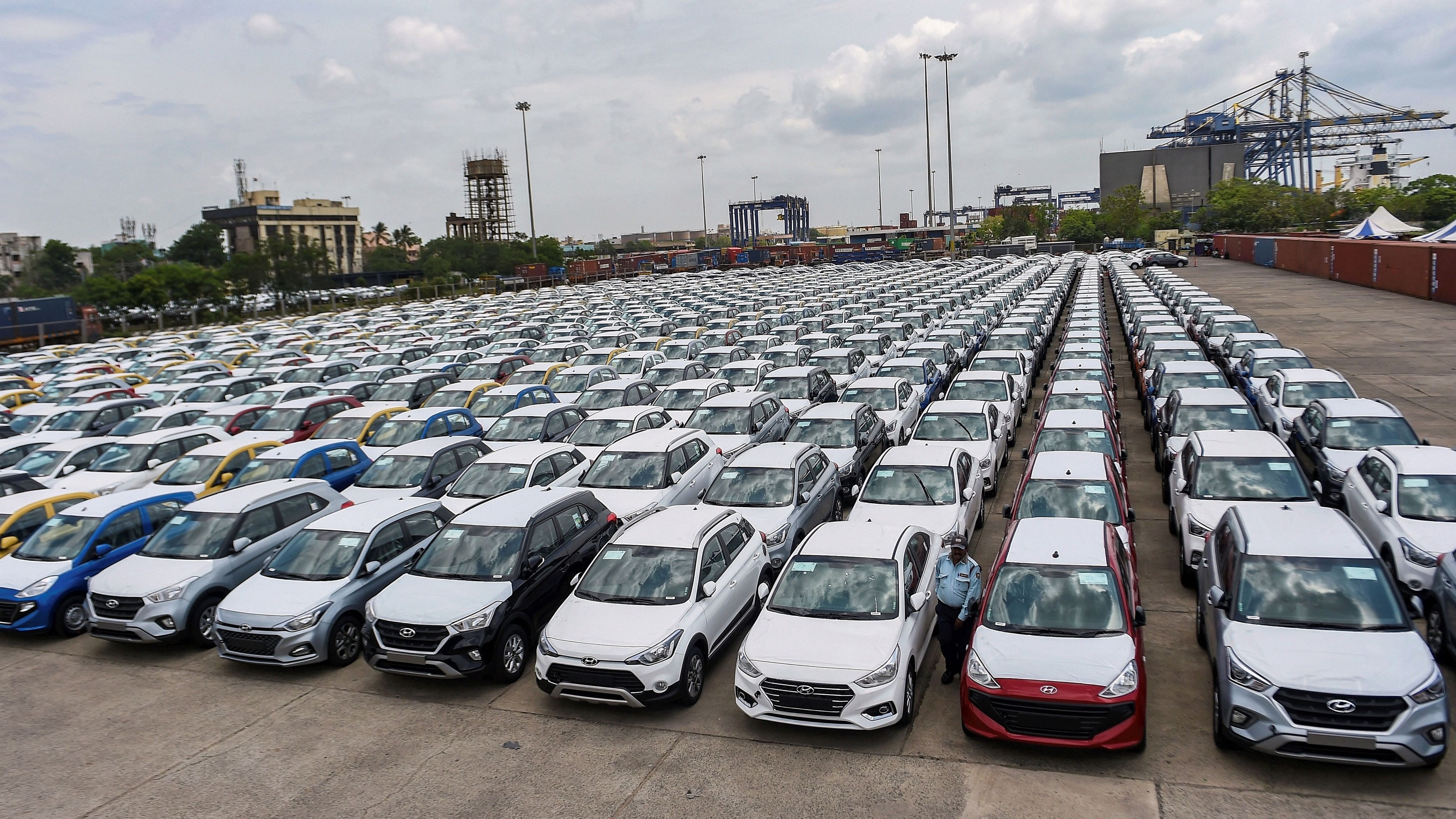
Representative image of cars are seen parked in a dock at the Chennai Port Trust.
Credit: PTI File Photo
The domestic automotive industry is expected to record moderate growth in financial year (FY) 2024, with the demand rising at a steady pace, rating agency ICRA said on Tuesday, forecasting a compound annual growth rate of around 6-9 per cent across the automotive segments over the medium to long term.
Rising per capita incomes, demographic profile, low vehicle penetration, favourable policy environment, including infrastructure development are expected to help grow the industry demand at a steady pace and will be the key drivers for the same.
The passenger vehicle segment reached all-time high volume levels in FY23 on the back of demand for personal mobility and stable semiconductor supplies and with a forecast to grow 6-9 per cent year-on-year (YoY) FY24. Similarly, the commercial vehicle industry also saw robust growth in FY23, with a modest 2-4 per cent YoY growth expected in FY24.
The two-wheeler industry continues to struggle, with volumes still below pre-Covid peak levels. with the material rise in cost of ownership constraining demand.
“Even as the industry is expected to record a moderate growth in volumes in FY24 (4-7% YoY), a sustained recovery in demand sentiments remains to be seen, amid concerns regarding the impact of an uneven monsoon precipitation on rural demand,” said Shamsher Dewan, Senior Vice President & Group Head - Corporate Ratings, ICRA.
Even though EV penetration is expected to increase exponentially across segments, profitability is expected to delay take-off, ICRA said.
The electric vehicle (EV) segment has seen significant growth over the past two years, spurred by government subsidies under the FAME-II policy, enhanced awareness, and increasing product launches. The electric two-wheeler (e2w) segment accounted for approximately 85-90% of total EV sales (excluding e-rickshaws) to date on the back of healthy subsidies. E-buses penetration in India has also picked up in the last 2 years from about 2% (sales less than 400 vehicles) in FY21 to 7% (sales close to 1900 vehicles) in FY23 and already hitting 5% in the first half of FY24, with1200 vehicles sold already.
As many as 7.090 e-buses were sanctioned as of October 31, 2023, of which 2,435 were deployed. Over 90% of tenders have been awarded for intra-city operations and more than 80% for 9-metre buses, the reports further revealed.
The challenge there however is the high total cost of ownership (TCO). “It is the favourable TCO that will drive up the adoption of e-buses,” the report said adding that the capex costs (after subsidy) is significantly high for e-buses ranging anywhere between 40-180% higher than the conventional diesel buses.
The continuation of the FAME II subsidy, which currently constitutes ~15% of realisation for premium EVs, is a key factor that will determine profitability. Furthermore, Battery, which constitutes ~35-40% of the overall vehicle cost, is expected to gradually decline, while enhanced localisation levels are likely to aid in bringing down the cost of production pushing the profitability further up.
As the electrification transition continues, OEMs are expected to invest significantly in the development of EV platforms and enhancing manufacturing capacities. This investment is expected to moderate return indicators for the industry over the near to medium term. Despite this, competitive manufacturing capabilities and ongoing efforts by OEMs to enhance distribution networks bode well for export prospects.
However, over the near term, domestic industry volumes are expected to continue driving growth, with export prospects remaining weak due to a shortage of dollar availability in key markets and inflationary pressures, the report further added.